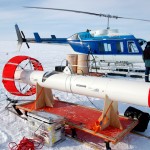The role of ESA’s Earth observation campaigns is to provide support for the preparation of future space missions and to validate the data being delivered by those satellites already in orbit.
Before embarking on an Earth observation mission in space you need to make sure that the instruments being considered are capable of providing the information needed and to the accuracy required to advance our understanding of how Earth functions.
For most of us the vision of space technology is of that in a cleanroom – high-tech delicate work in a super clean environment, which, of course, is largely true.
However, a crucial part of a mission’s development process often means getting hot and sweaty or freezing cold out in the field collecting real data – in-situ measurements and images taken from sensors on aircraft, from the ground or at sea.
To do this, ESA organises test campaigns using instruments that closely match the characteristics to those being developed to work from space.
Making sure that data already being delivered from space are accurate is also a vital aspect of any Earth observation mission. Again, in-situ measurements taken from aircraft and on the ground are taken and this time compared with data being acquired by the satellite orbiting above. In many cases, campaigns are planned so that the ground-truth measurements are taken at the same time as acquisitions are made from space.
This all means that ESA invests a lot of time and effort in sending teams of scientists and researchers out into the field – and sometimes to some very inhospitable places such as the Arctic.
In fact, campaigns are carried out all over the world – from the icy polar regions to tropical rain forests.
With about 10 major field campaigns on the go every year, this blog aims to bring you some day to day reports from our scientists in the field as they help to ensure the integrity of ESA’s Earth observation missions.









